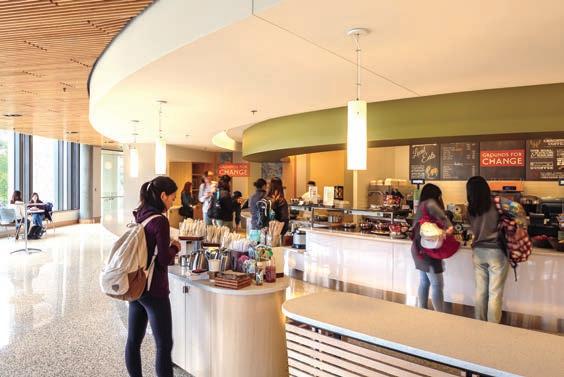
2 minute read
Loans (Federal & Private)
Many students utilize federal or private loans to fund a portion of their graduate education. Whenever possible, federal loans should be utilized before private loans.
Federal Loans
Advertisement
There are two types of Federal Student Loans. Federal Direct Loans, Unsubsidized Federal Direct Loans allow students to borrow up to $20,500 each academic year ($10,250 a semester). Interest begins accruing immediately, though repayment is not required while enrolled in the degree program.
Graduate Direct PLUS Loans
These loans, which require a credit check, allow students to borrow up to the cost of attendance minus any financial aid received (e.g., Brown School scholarships). Similar to Federal Direct Loans, these do not require repayment while enrolled in the program and interest accrues immediately.
Students planning to borrow federal loans must complete the FAFSA process. Learn more on page 7
Before You Borrow
Important Information About Federal Loans
All loans have an origination fee. An origination fee is a fee charged by a lender to the borrower to cover the costs of processing the loan.
Loan forgiveness may be an option, but the eligibility criteria is very specific. Borrowers employed in the public sector may become eligible for Public Service Loan Forgiveness (PSLF) after making 120 consecutive, on-time monthly payments. The Brown School encourages students to research this option, but we caution that—at any time—the government may opt to cap, restrict or end the PSLF program. We would discourage students from relying on loan forgiveness as their primary repayment strategy.
Private Loans
Private Loans
Use discretion when considering private loans. Although they may offer lower interest rates than federal loans, they may not provide the same guaranteed benefits (forbearance, deferment, and income-driven repayment options, among others). If you are considering private loans, be sure to review thoroughly all lending conditions and terms.
Before you take out a loan, we recommend exploring resources about responsible borrowing. In addition to the tips below, the Federal Student Aid website (studentaid.ed.gov) is a good place to start this research.
Loan refunds can help cover living expenses, but should only be taken if absolutely necessary. You may accept loans that, when combined with scholarship, exceed the value of tuition and fees. Excess funds will be directed to you once a semester through a check, called a refund, and can cover living expenses. Refunds accrue interest, and should only be accepted in the amount needed to cover living costs. This means you may accept only a portion of the loans you are offered. Whenever possible, we encourage you to cover living expenses through part-time work.
Repayment plans can be income-based. The Department of Education offers income-driven repayment, which can be a more manageable option as you grow in your career.
FAFSA Timeline
Completing the Free Application for Federal Student Aid (FAFSA) is required for federal student aid, including loans and work-study. This timeline lists major dates and deadlines around initiating and completing FAFSA. Students can find more comprehensive information on the FAFSA website.
OCTOBER Free Application for Federal Student Aid (FAFSA) opens online.
MARCH FAFSA submission deadline.
Students wishing to be considered for Federal Work-Study must submit their FAFSA. We encourage you to submit FAFSA as early as possible, and no later than July 1 if you plan to receive a refund for living expenses.
APRIL – JULY Once you confirm your intent to enroll, you will receive an email from Brown School Office of Financial Aid indicating your financial aid package and loan options ONLY IF you are planning borrow federal loans. After you receive this email, you can review your aid package and complete the federal checklist for receiving loans.
AUGUST Loans disburse on your student account no sooner than 10 days prior to the first day of classes. Loan refund checks are processed within 3-5 days.



